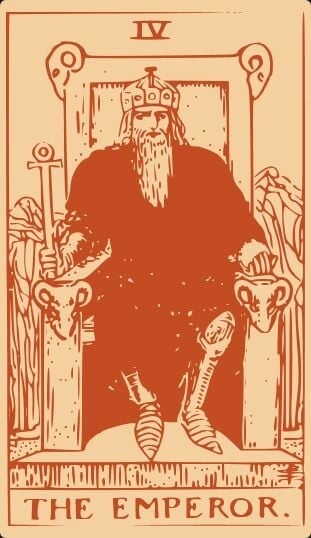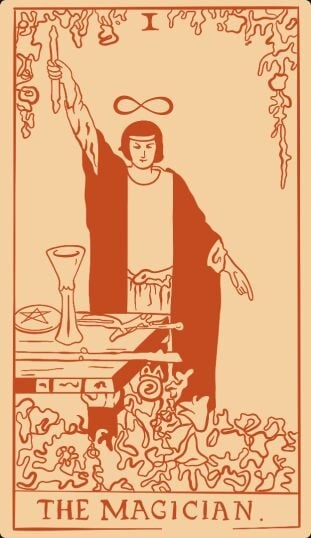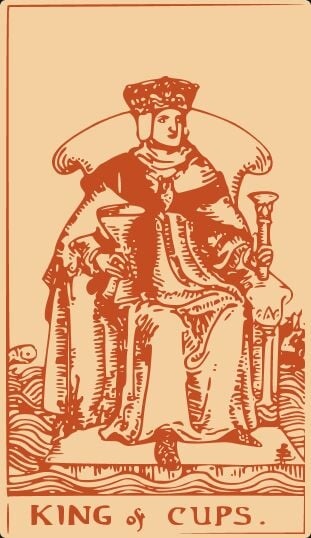Here, we discern a long-held symbol of earthly power: a white-haired man, stern, wearing armor beneath his regal garments, and seated on a stone throne. Note the scepter The Emperor holds, bearing the universal sigil of the male sex, and compare this to The Empress’ totem of femininity, which is carved onto a heart-shaped stone and rests against her dais. His throne bears the images of four rams’ heads, linking The Emperor to the sign Aries, which is ruled by Mars, the God of War. The Emporer is power and strength. The extent to which these can be used for good or ill depends entirely on the personality that directs them.


Through the successful completion of the journey of self-discovery to inner awareness, The Fool becomes The World dancer, free, with mind, body, and soul in complete unification. The wand that was held with such focus and ambition by The Magician is held - one in each hand - lightly by The World; the power she channels flows through her and is replenished in a never-ending stream. A laurel wreath entirely circles the dancer, symbolizing triumph and achievement.

In this card we see a figure who wields all the suits of the Major Arcana with confidence: in his raised hand he holds a Wand, while on the table (or altar) before him lies a Pentacle, a Cup, and a Sword. They await his will. And herein lies the key to understanding this powerful card: The Magician is intention. He is the focused assertion of the will and the paths that open before us as a result.

The Page of Cups stands before gently rolling waves and holds a Cup from which a fish fancifully emerges - a fish that is echoed in the Page’s hat. This is a card of a type of potential that is lightly held and playfully engaged with.

Wands relate to the element of fire, and the suit’s Ace represents its essence: drive, action, energy, movement, and opportunity. And yet fire can burn, too; it has the potential to cause destruction, and these things are also represented in the cards of Wands.

Unlike the Queen of the suit, the King of Cups is not directly connected to the water: his throne rests upon the waves and an artificial fish, as opposed to a live one, is hung around his neck. The King does not look at his Cup but, instead, holds it with the same grip with which he holds the scepter in his other hand. Here is creativity that has been contained and put to use.
